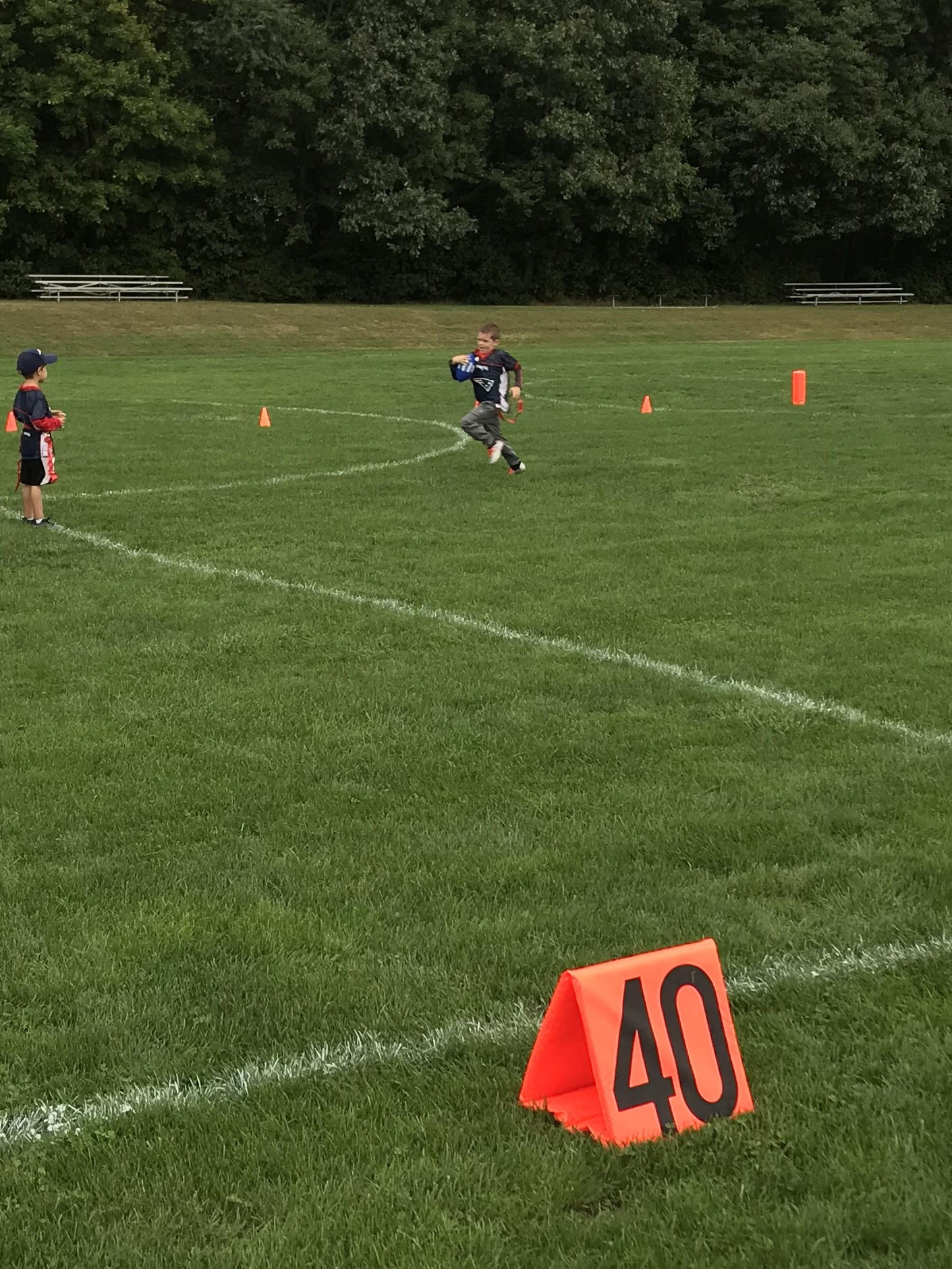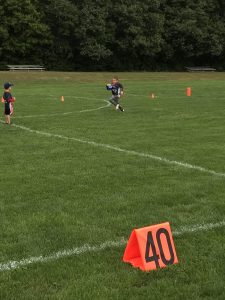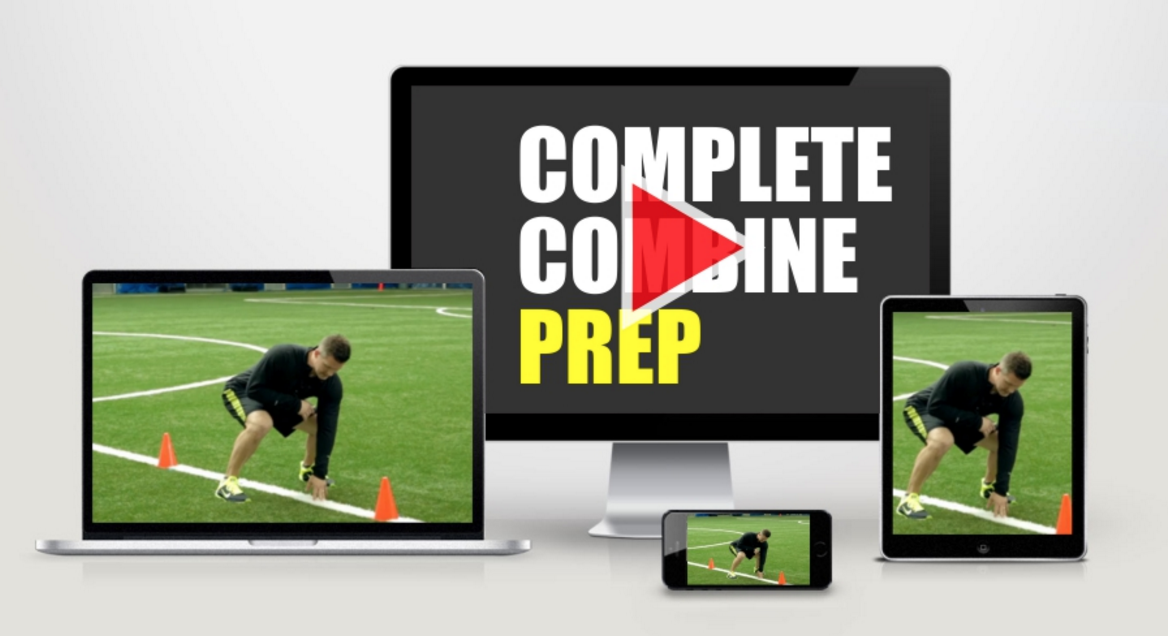Youth Football Specific Speed
There is always much debate and conjecture when it comes to the topic of sport-specific speed training.
Being a Youth Conditioning Specialist myself, I will tell you that specialized anything at the youth level is contraindicated for a variety of reasons. Countless research papers and case studies have shown us an assortment of physical, psychological and emotional fallouts that often result in the over-pursuit of one sport or training for one sport during the maturation process in a young athlete.
There is also the matter of general adaptation. In a young nervous system, adaptations to training or stimulus are rather global in nature. In that, it is a much more valuable and worthwhile endeavor when working with pre-adolescent athletes, to restrict any form of speed-based training to more globalized measures of inclusive athletic development, looking towards the macro elements such as systemic strength, mobility, liner and lateral force production rather than the more micro components of specific ‘football cuts’, ‘baseball base running’ or any other type of tactical factors related to a particular sport.
Having said that, as a young athlete ascends into their adolescent years, possessing a broader array of athletic skills and abilities, it becomes paramount to begin isolating these macro elements into more specifically applicable capacities.
The action of creating sport specific speed drills and exercises is also a hotly debated topic.
Far too often, we find football, soccer, baseball or basketball coaches merely sending their athletes on endless sprints for the purpose of ‘training speed’. It must be understood that this type of training does not amount to quantifiable speed work. Training stimulus in which athletes are asked to perform repeated efforts with limited rest time (especially when the symptomology of the effort includes breathlessness, excessive sweating or an increase in lactic acid production) is not an efficient or realistic means by which to increase speed. Speed training involves a deliberate focus on the efficiency of motion, a targeted directive towards nervous system activation and adequate rest periods so as to allow this efficiency sequence to be repeated without undue fatigue.
This becomes a very difficult process to create and establish within a given practice in which you have dozens of athletes and limited time frames.
There are several other training elements that can and will have positive impacts on the speed productivity of a young athlete and are also much more easily implemented into a contemporary youth sports practice model.
Over the years, I have alternated the use of speed intensive training stimulus with specific strength training stimulus and seen very positive results. I define specific strength stimulus as building systemic strength (force) capacities through a specific locomotor pattern.
The benefits of these drills are that they produce strength and force aptitude through a sport specific or even positional specific means and can be easily used within the duration of a given practice.
For this article, I will use examples from the sport of American Football.
Running Backs & Receivers:
The principle will carry a ball (wrapped up) and sprint at roughly 80% velocity for a period of 20 – 25 yards.
Two ‘opposing’ players will run backwards alongside the principle with their inside hands on his or her shoulders.
You must dictate that the pattern being run is as close to a straight line as possible (this could be marked with cones, ladders or rope).
As the principle begins to run, the opponents will attempt to impede his or her progress by pressing against the shoulder (on which they have their inside hands). The principle’s job is to resist being slowed down at all.
During this drill, you will notice several things:
– There will be an inconsistent pressure being applied to the principle, which will force him or her to continually re-correct their positioning in order to ‘stay square’
– The principle will be forced to run with a forward lean (in order to overcome the resistance) and drive into the ground with a strong hip flexion/extension motion in order to create movement
While certainly not ‘speed’ training per say, this is an excellent specific strength exercise that teaches ball carriers how to drive into the ground while re-correcting their path based on opponent pressures.
Lineman & Linebackers:
In this drill, your athletes will develop specific strength to both drive force (concentric) and resist force (eccentric action).
Two players will line up facing each other (roughly 12 inches apart) and ‘hooked up’ (their hands resting on their opponent’s chest).
Player 1 will initiate force and work to drive Player 2 backwards (roughly 5 feet). Player 2’s job is to resist this force as best as possible. It is important that Player 2 understands that he or she is not to resist force by driving back at Player 1, but rather on gaining and re-gaining leverage in order to resist being pushed backwards.
As soon as Player 1 has driven Player 2 backwards 5 feet, they immediately come back to center and switch roles.
This is also not to be confused with a mere ‘bull rush’. In fact, I often have my athletes perform this drill during summer camp and without the use of pads or a helmet.
The key is to gain leverage and develop a strong hip drive in order to create movement. With more advanced athletes, include ‘hand fighting’ into this drill as well. Rather than having the players keep their hands statically on their opponent’s chest, allow the athletes to fight for hand position as a means of gaining leverage.
This adds to the tactical portion of the drill.
Specific strength exercises are fantastic ways to increase the sport and positional specific speed of your athletes – and often much easier to implement within the scope of a practice.
Recommended Athletes Acceleration
Products






0 Comments for “Youth Football Specific Speed”